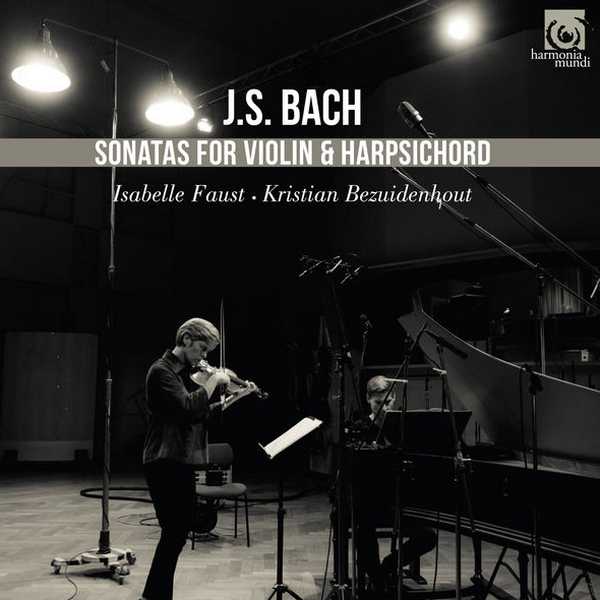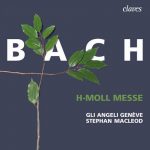

Composer: Johann Sebastian Bach
Performer: Isabelle Faust, Kristian Bezuidenhout
Number of Discs: 2
Format: FLAC (tracks)
Label: Harmonia Mundi
Catalogue: HMM90225657
Release: 2018
Size: 1.79 GB
Recovery: +3%
Scan: yes
CD 01
Sonata No. 1 in B minor for Violin and Harpsichord, BWV 1014
01. I. Adagio
02. II. Allegro
03. III. Andante
04. IV. Allegro
Sonata No. 2 in A Major for Violin and Harpsichord, BWV 1015
05. I. [Largo]
06. II. Allegro
07. III. Andante un poco
08. IV. Presto
Sonata No. 3 in E Major for Violin and Harpsichord, BWV 1016
09. I. Adagio
10. II. Allegro
11. III. Adagio ma non tanto
12. IV. Allegro
CD 02
Sonata No. 4 in C minor for Violin and Harpsichord, BWV 1017
01. I. Largo
02. II. Allegro
03. III. Adagio
04. IV. Allegro
Sonata No. 5 in F minor for Violin and Harpsichord, BWV 1018
05. I. [Largo]
06. II. Allegro
07. III. Adagio
08. IV. Vivace
Sonata No. 6 in G Major for Violin and Harpsichord, BWV 1019
09. I. Allegro
10. II. Largo
11. III. Allegro
12. IV. Adagio
13. V. Allegro
“Isabelle Faust has never cultivated the whale-boned red-carpet glamour that many female soloists feel obliged to pursue. On stage and off, the German violinist’s manner is relaxed, her style understated. She sports a gamine, Jeanne d’Arc crop and, save for the tell-tale violinist’s love-bite just below her jaw, you might guess her to be an architect or an academic. In a way, she is both, for an appreciation of musical structure and an interest in historical research are integral to her work.
The stillness of focus and purity of sound that has distinguished her playing can be heard in a repertoire stretching from Beethoven and Schubert through to Hartmann and Ligeti, on modern and period strings. Where other violinists dazzle, Faust is a thinker. On the subject of her own individual sound, she is hesitant: “Of course, I’m trying to be me in whatever repertoire I’m playing, and I do think that my work is different from that of other violinists – but actually I’m never really trying to keep to this idea of an individual sound. It’s always my goal to get a different interpretation and also a different kind of voice particular to the voice of the composer.” Anna Picard – The Guardian
The six Sonatas for Violin and Obbligato Harpsichord BWV 1014-1019 (“obbligato” – compulsory – means the keyboard is fully scored, as opposed to basso continuo for which only the bass is scored, the rest being left to the discretion of the performer, who improvises) are some of these works that Bach kept revisiting and reworking. The oldest remaining source – from around 1725, through one of his nephews – already highlights the will to make these compositions evolve by refining them with successive adjustments. The work underwent another overhaul in Agricola’s manuscript, around 1741, while a copy made around 1750 by Altnickol reveals a third cycle status. An observation made by the musician’s second youngest son, Johann Christoph Friedrich Bach – “He wrote these trios just before his end” – seems to have been interpreted as proof that Bach was still working on these sonatas in the last years of his life. This new recording by Isabelle Faust, a great specialist of baroque interpretation, and Christian Bezuidenhout on the harpsichord, discretely reveals the extraordinary richness of these works’ three-voice writing, that resembles the format of a trio sonata.



